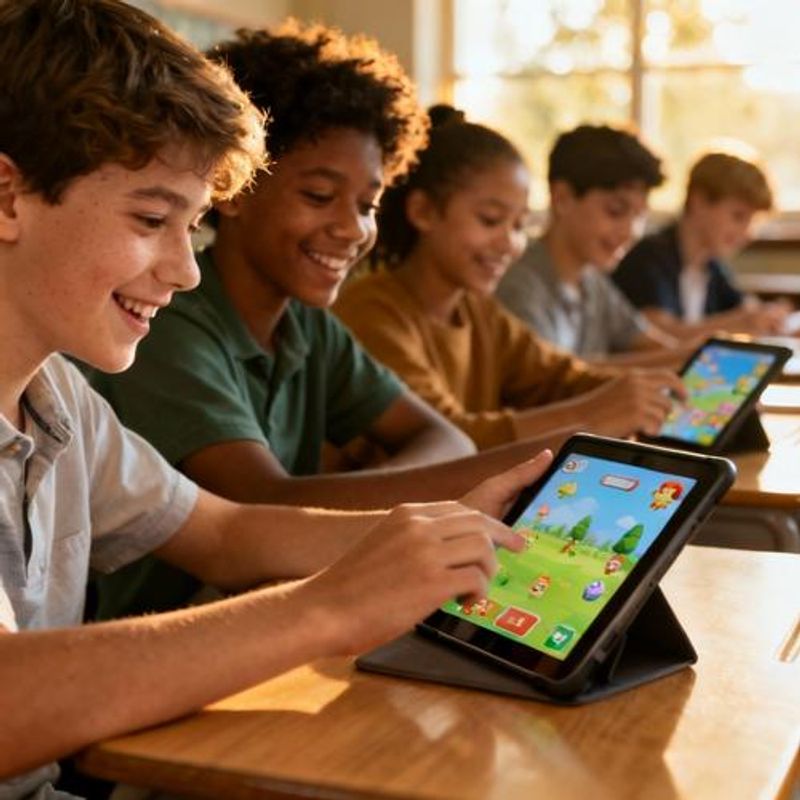How to Gameify Learning: A Complete Guide for EdTech Professionals

Student engagement rates dropping? Learning outcomes plateauing despite your best content efforts? You're not alone. This comprehensive guide reveals how to gameify learning experiences that boost engagement by up to 300% while maintaining educational integrity. Whether you're designing K-12 platforms or corporate training modules, you'll discover actionable strategies to transform passive learners into active participants.

Why EdTech Professionals Struggle with Student Engagement
Educational technology has revolutionized content delivery, but engagement remains the biggest challenge. Traditional digital learning often mirrors passive classroom models—students consume content without meaningful interaction. Research shows that 67% of students report feeling disengaged during online learning sessions. For EdTech professionals, this translates to poor completion rates, limited knowledge retention, and frustrated educators who question platform effectiveness. The core issue isn't content quality—it's the lack of intrinsic motivation that games naturally provide.
Key Takeaways: The Gameify Framework
Successfully gameifying education requires balancing engagement mechanics with learning objectives. Here are the essential components:
- Progressive challenge systems that adapt to individual learning pace
- Meaningful reward structures tied to mastery, not just participation
- Social learning elements that foster collaboration over competition
- Real-time feedback loops that guide learning decisions
- Clear progression paths that visualize learning journeys

Building Your Gameify Strategy: The Five-Layer Approach
Layer 1: Foundation Mechanics. Start with point systems that reflect learning mastery. Assign points based on concept understanding, not time spent. Create achievement badges for completing skill clusters rather than individual lessons. Design experience levels that unlock new content areas as prerequisites are met.
Layer 2: Narrative Integration. Embed learning objectives within compelling storylines. Math problems become resource management challenges in virtual cities. History lessons transform into interactive timeline adventures. Science concepts unfold through problem-solving missions that mirror real-world applications.
Layer 3: Social Dynamics. Implement collaborative challenges where groups solve complex problems together. Create peer mentoring systems where advanced learners guide newcomers. Design friendly competitions that celebrate diverse learning styles and achievements.
Layer 4: Personalization Engine. Adapt difficulty based on individual performance patterns. Offer multiple pathways to the same learning objectives. Provide choice in how students demonstrate knowledge—visual projects, written assessments, or interactive presentations.
Layer 5: Analytics Integration. Track engagement patterns to identify optimal challenge levels. Monitor progress indicators that predict learning outcomes. Use data insights to refine game mechanics and content delivery timing.
Implementation Templates and Examples
Template 1: Quest-Based Learning Module. Structure: Introduction scenario → Skill-building challenges → Knowledge application → Reflection checkpoint → Next quest unlock. Example: 'Environmental Science Detective' where students investigate pollution sources, test water samples (virtual lab), propose solutions, and present findings to a mock city council.
Template 2: Progressive Skill Trees. Map learning objectives as interconnected skill nodes. Students must master foundational concepts before accessing advanced topics. Visual representation shows clear learning pathways and dependencies. Include optional 'exploration branches' for extended learning opportunities.
Template 3: Collaborative Challenge Framework. Team formation based on complementary skills. Assign roles that rotate to ensure balanced learning. Include both synchronous collaboration sessions and asynchronous contribution phases. Evaluate both individual learning and group achievement.

Common Pitfalls When You Gameify Learning
Over-rewarding participation without mastery creates surface-level engagement. Students focus on collecting points rather than understanding concepts. Solution: Tie rewards directly to demonstrated competency and application skills.
Competitive elements that discourage struggling learners. Leaderboards can demotivate students who need more time to grasp concepts. Solution: Implement personal progress tracking and celebrate individual improvement rates alongside achievement levels.
Complex game mechanics that overshadow learning objectives. When navigation and rules become more challenging than the content itself, learning suffers. Solution: Maintain intuitive interfaces and ensure game elements support rather than complicate the educational experience.
Ignoring educator training and buy-in. Teachers need support to effectively facilitate gamified learning environments. Solution: Provide comprehensive training resources and ongoing support for educators implementing your platform.
Your Next Steps to Gameify Learning Effectively
Start small with one core learning module and test your gameify approach with a focused user group. Gather feedback on both engagement levels and learning outcomes before scaling. Remember that successful gamification enhances rather than replaces sound pedagogical principles. Focus on intrinsic motivation—helping students discover the joy of learning and mastery. Consider exploring AI-powered adaptive learning tools that can automatically adjust game mechanics based on individual learning patterns. The future of education lies in creating experiences that students actively choose to engage with, not endure.